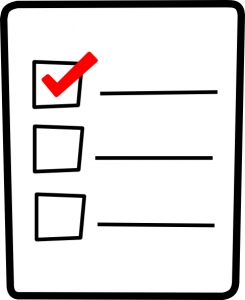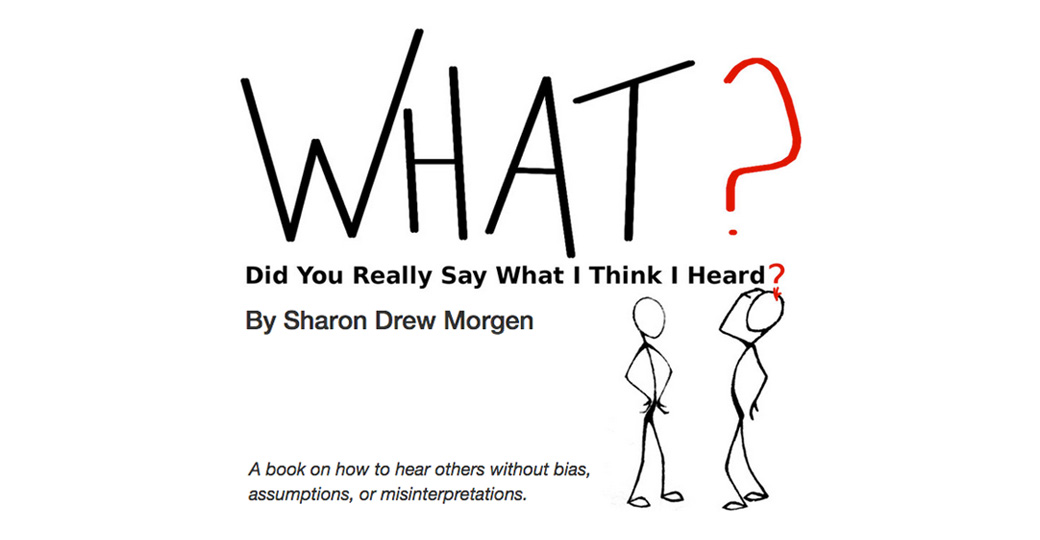Checklist for Influencers: questions for sellers, coaches, leaders, change agents.
 Most of you are really good at what you do: as influencers, sellers, coaches, change agents, or leaders, your intuition, excellent skills, and history of success guide your ability to facilitate change for your clients. And yet using conventional models and questions – both designed to drive the needs of the facilitator – it’s inevitable that your interactions will have bias, and will unwittingly restrict possible outcomes accordingly. Here’s a checklist of questions to help you determine the extent of bias in your interactions:
Most of you are really good at what you do: as influencers, sellers, coaches, change agents, or leaders, your intuition, excellent skills, and history of success guide your ability to facilitate change for your clients. And yet using conventional models and questions – both designed to drive the needs of the facilitator – it’s inevitable that your interactions will have bias, and will unwittingly restrict possible outcomes accordingly. Here’s a checklist of questions to help you determine the extent of bias in your interactions:
- When attempting to influence someone (as sellers, leaders, etc.) how can you determine the role your natural assumptions, unconscious expectations, and goals play in biasing or restricting the outcome?
- Are you aware of, and make allowances for, your full range of biases? Can you think of how your biases might predispose specific outcomes? Do you know what you’d need to do differently to enter a conversation without bias or assumptions?
- How do you manage your Communication Partner’s (CP) biases and assumptions to avoid unconscious resistance, fallout, and restricted choice (not to mention lost sales and difficult implementations) and expand choice and possibility?
- Are you aware the extent to which your curiosity and questions are subjectively biased toward the goal you’ve (un)consciously set that 1. potentially lose a more congruent outcome, 2. alienate many who might need your solutions?
- Due to conventional assumptions for information gathering, how can you be certain that you’re speaking to all (ALL) the right people, or using the most appropriate questions for their idiosyncratic knowledge and culture, to gather the most appropriate – and complete – information? In other words, are your expectations biasing your outcomes?
- Are you aware of how much your brain filters what you hear and how much more is being said/meant than what you think you’re hearing? Are you aware of the cost of misunderstanding what’s going on outside of your goals and expectations? How much information is available that you’re not asking for due to your biases?
- How much of the data you gather turns out to be accurate? How do you know when/if you ever get to the accurate data? How do your expectations and the bias in your questions interfere with the Other’s recognition of the full fact pattern (largely unconscious at the start)?
- What would you need to believe differently to consider that your current skill set, biases, and habitual set of expectations that you enter a conversation with are creating a diminished ability to influence the full extent of real change and avoid resistance?
- How often do you assume something is ‘working’ or was successful – a coaching client was changing, or a buyer was going to buy – and you were wrong in your approach or communication? Do you know for certain what happened behind-the-scenes that caused the failure and you could have circumvented? And if you don’t, what would you have needed to do differently during the interaction(s) to enable more of a collaborative communication?
- Are you aware of how your own biases, assumptions, triggers, and filters, have gotten in the way of success – or do you believe you’re right and the other person wrong/stupid?
- What would you need to believe differently to be willing to add some new skills to use less bias? To enable your CPs to recognize and manage their own unconscious elements that have informed their choices and would need to be shifted for change (a purchase, an implementation) to occur so they can easily buy, change or adopt your terrific material?
FACILITATING CHOICE
We’re all in the business of influencing, or attempting to get what we want. Yet we fail a very high percentage of the time; sellers lose 95% of their prospects; coaches lose 70% of follow on clients; implementations fail 97% of the time. It’s not our fault: we fail because our conventional skills are focused on
- content push
- premature goal setting
- the facilitator’s expectations
- listening for pre-determined details
and miss the unspoken metamessages, values, history, rules, and consensus issues that make up our CPs status quo. In other words, the biases that we use and enter our conversations with biases, and restricts outcomes. It’s possible to enable our CP to do their own change work from within (where real change takes place), without us biasing and limiting possibility.
So here’s the ‘pitch’: Using our conventional, habitual skill sets and unconscious listening, it’s pretty impossible to enter conversations without bias. To that end, I’ve developed a generic change management model that facilitates decision making and change at the core unconscious, systemic level and avoids bias and resistance. But it’s not a conventional model that uses ‘normal’ skills.
Coding my own Asperger’s systemizing brain over decades, I’ve developed a new form of listening, a new type of question, and coded the steps that happen unconsciously during all change to add to anyone who seeks to influence change in others. For 30 years, I’ve trained it to sales people, coaches, leaders, and negotiators globally. I’ve written 7 books on the subject and hundreds of articles sharondrewmorgen.com.
The model is not conventional (I have Asperger’s, remember?) but works as an addition to most other coaching, sales, leadership, etc. models to help others determine how to quickly and congruently buy, change, implement, etc. themselves in the area you are facilitating. In other words, you end up avoiding bias because you support them in using their own idiosyncratic system of rules and relationships to make their own changes rather than trying to get them to do what you want them to do.
I’ve named the model Buying Facilitation® but it’s a generic model that enables real change and quicker decisions. In sales there are no more delayed sales cycles or lost prospects; in change management, you can have successful implementations that get the right people, the right issues, involved immediately; coaching clients no long resist change. You can close 40% of all qualified prospects from first call, in half the time; you can help coaching clients discover their unconscious incongruences on the first call; you can implement large change events with no resistance.
The new model makes it possible to unhook from your personal biases and enter conversations in a way that leads/ discovers/ creates all that’s possible through win/win, servant leadership and congruent change. Imagine being able to enter every conversation and have it reach its most ethical, financial, and creative possibility. Imagine. All you have to do is first be willing to help others make their own change, and get rid of your biases.
____________
Sharon Drew Morgen is the author of the NYTimes Business Bestseller Selling with Integrity, and the developer of the generic change management/decision facilitation model that teaches Others how to buy, change, collaborate, negotiate, and implement with no resistance, with full systemic buy in. She has trained 100,000 people worldwide, in global corporations (IBM, FEDEx, Morgan Stanley) and consulting firms (KPMG, Unisys). She adds this model to the front end of sales, change, decision analysis, leadership, and influencing, all discussed in her book Dirty Little Secrets: why buyers can’t buy and sellers can’t sell. Read more articles on: www.sharondrewmorgen.com
Read the first two chapters of her book What? on how to hear others without bias: www.didihearyou.com. She can be reached at 512 771 1117 or sharondrew@
Sharon Drew Morgen February 12th, 2017
Posted In: Communication

